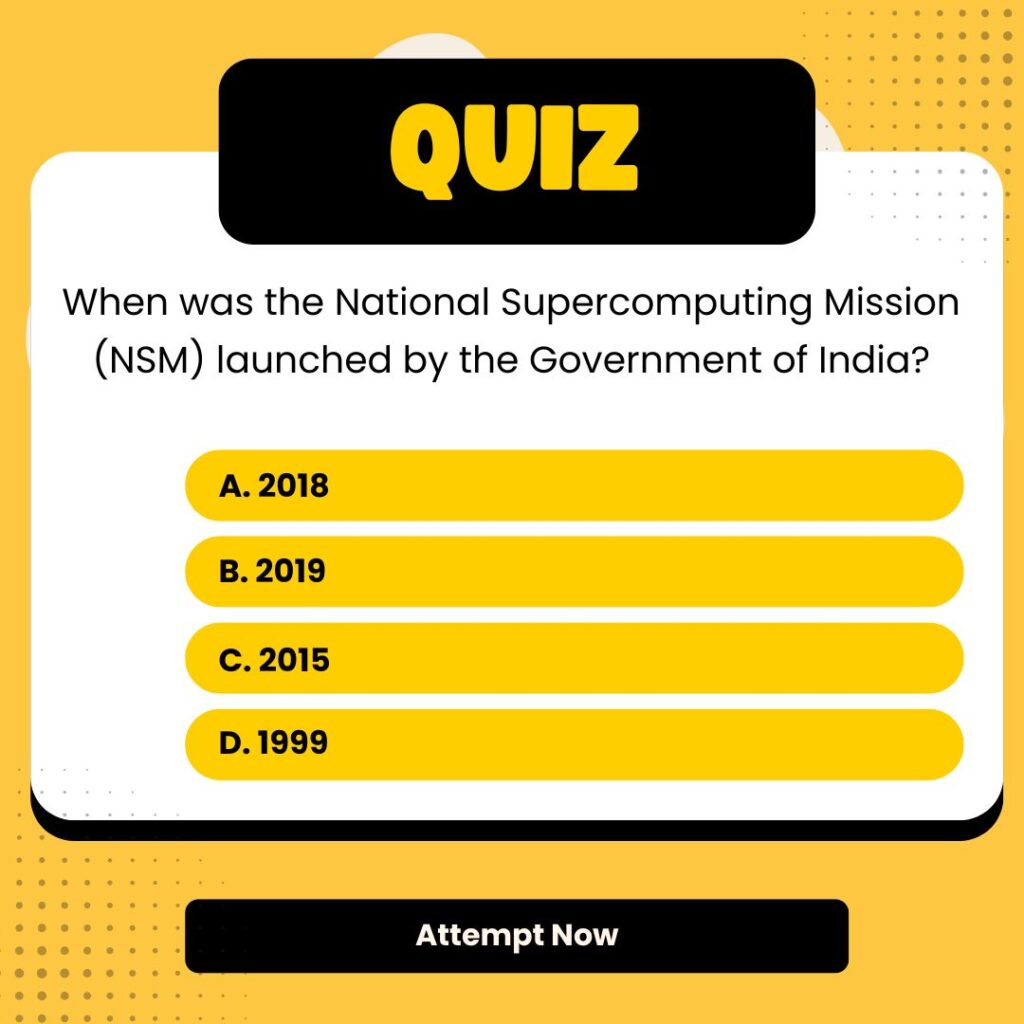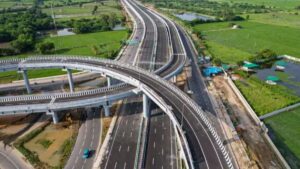The National Supercomputing Mission (NSM) is one of India’s flagship initiatives designed to make the country self-reliant in the field of high-performance computing (HPC). Launched in 2015, it aims to enhance India’s technological capabilities by setting up supercomputers in academic and research institutions across the country. The supercomputers are connected through the National Knowledge Network (NKN), allowing access to a wide range of scientific research, development, and innovation.
Why in the News?
Recently, as published in PIB the current progress under NSM and As of March 2025, the mission has successfully deployed 34 supercomputers, providing computational power to over 10,000 researchers and fostering innovation in fields like climate modeling, drug discovery, and energy security. The National Supercomputing Mission (NSM) is a crucial initiative launched by the Government of India in 2015 to position India as a global leader in supercomputing.
Mission Overview
- Launched: 2015 by the Government of India
- Primary Goal: Build and deploy indigenous supercomputing capabilities in India
Focus Areas
- Enhancing R&D capabilities
- Promoting Atmanirbharta (self-reliance) in supercomputing
- Supporting sectors like education, medicine, energy, astronomy, and climate science
Key Components
- Installation of supercomputers in academic and R&D institutions
- Development of indigenous high-speed communication networks like Trinetra
- Creation of training centers to foster the development of skilled professionals in HPC and artificial intelligence (AI).
Current Status and Achievements
Supercomputers Deployed
- As of March 2025, 34 supercomputers with a combined capacity of 35 petaflops have been deployed.
- Institutions like IISc, IITs, and C-DAC are major beneficiaries.
- These systems support over 10,000 researchers, including 1,700+ PhD scholars.
Impact on R&D
- Researchers have completed 1 crore compute jobs and published 1,500+ papers in leading journals.
The supercomputers have facilitated breakthroughs in critical research areas,
- Drug discovery
- Disaster management
- Energy security
- Climate modeling
- Astronomical research
- Material research
Indigenous Development
- The PARAM Rudra supercomputers, built using indigenous technology, are now operational in Pune, Delhi, and Kolkata.
- Trinetra, India’s high-speed communication network, is improving data transfer between computing nodes.
Noteworthy Achievements
- AIRAWAT Project: India’s AI supercomputing infrastructure, capable of 200 petaflops, ranked 75th globally in ISC 2023.
- Param Pravega: Installed at IISc, Bengaluru, this supercomputer is one of the most powerful in India with a capacity of 3.3 petaflops.
- Param Shivay: The first indigenously built supercomputer, installed at IIT BHU, Varanasi in 2019.
Infrastructure Phases
- Phase 1: Focused on building the initial supercomputing infrastructure by installing six supercomputers and initiating system component assembly within India.
- Phase 2: Shifted towards indigenous manufacturing of supercomputers and local software stacks, with India contributing 40% value addition.
- Phase 3: Aims for complete indigenization in supercomputing design, development, and manufacturing, setting up advanced HPC systems at major institutions.
Strengthening NSM through the India Semiconductor Mission (ISM)
- The India Semiconductor Mission (ISM) will support NSM by enhancing India’s capacity to produce essential supercomputing components like processors, memory chips, and accelerators.
- ISM aims to make India self-reliant in semiconductor production, thus contributing to faster, more efficient, and affordable supercomputers tailored for India’s needs.
| Summary/Static | Details |
| Why in the news? | National Supercomputing Mission: Powering India’s Technological Future |
| Launch Year | 2015 |
| Supercomputers Deployed | 34 (total capacity of 35 petaflops) |
| Research Areas | Supported Drug Discovery, Disaster Management, Energy Security, Climate Modeling, etc. |
| Training Centers | Pune, Kharagpur, Chennai, Palakkad, Goa |
| Key Indigenous Systems | PARAM Rudra, PARAM Pravega, Param Shivay |
| HPC & AI Skills Training | Over 22,000 individuals trained |
| Total Compute Jobs | Completed 1 crore |
| Global Ranking for AI Supercomputing | AIRAWAT ranked 75th in ISC 2023 |
| AIRAWAT ranked 75th in ISC 2023 | Funding Allocation ₹1874 crore for infrastructure, R&D, HRD, and mission management |











 PM Modi Inaugurates Urban Extension Road...
PM Modi Inaugurates Urban Extension Road...
 Indian Tricolour Hoisted at Seattle’s Sp...
Indian Tricolour Hoisted at Seattle’s Sp...
 President Droupadi Murmu Inaugurates Plu...
President Droupadi Murmu Inaugurates Plu...

